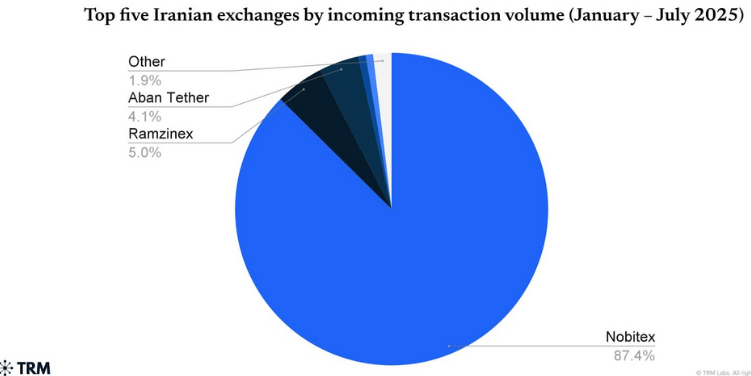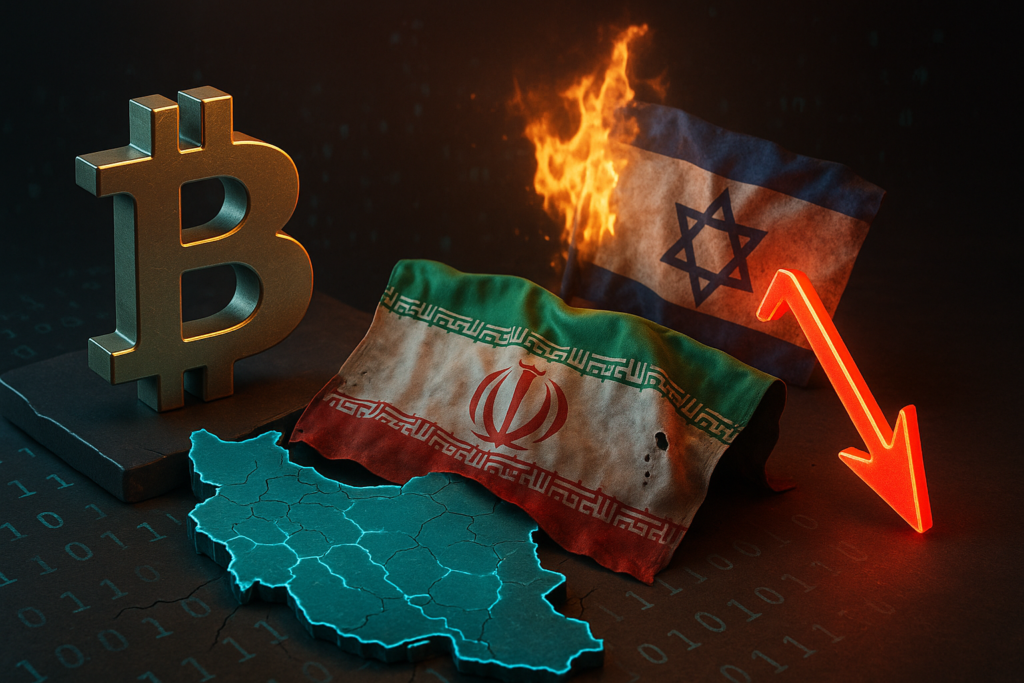Geopolitical tensions, exchange hacks, and stablecoin restrictions drive a significant decline in Iran’s cryptocurrency activity.
Iran’s cryptocurrency market experienced an 11% drop in transaction flows during the first seven months of 2025, as escalating tensions with Israel, a major exchange hack, and stablecoin blacklisting shook investor confidence, according to a recent blockchain analysis report.
Geopolitical Tensions and Power Outages Impact Market
The decline coincided with a 12-day conflict between Iran and Israel starting June 13, which disrupted infrastructure and caused widespread power outages. Analysts note that these outages were linked to cyber operations and regime-imposed shutdowns, creating severe liquidity issues in local markets.
“This downturn aligns with political instability and major security incidents that damaged confidence in domestic platforms,” said one blockchain security expert.
Nobitex Hack and Liquidity Crisis
Iran’s largest crypto exchange, Nobitex, which handles 87% of the country’s crypto transactions, suffered a $90 million hack on June 18. The attack, claimed by the pro-Israel group Predatory Sparrow, forced users to seek alternative platforms, disrupting liquidity and transaction speeds.

Tether Freeze Adds to Market Pressure
Adding to the turmoil, Tether froze 42 wallets linked to Iranian entities on July 2 in its largest-ever enforcement action. This move pushed Iranian traders to shift from TRON-based USDT to alternative stablecoins like DAI on Polygon, further fragmenting the market.
“Stablecoins remain a lifeline for Iranians battling inflation and sanctions,” the report noted, underlining the continued reliance on digital assets despite increasing restrictions.
Crypto Still Fuels Sanctioned Trade
Despite the downturn, Iran continues using cryptocurrency to bypass international sanctions, including purchases of AI hardware and drone components from Chinese suppliers. However, illicit crypto activity accounts for less than 1% of total transaction volume, the report emphasized.
The combination of geopolitical conflict, exchange vulnerabilities, and regulatory crackdowns has reshaped Iran’s crypto landscape, forcing users to adapt strategies to maintain financial access under severe restrictions.
Disclaimer
This content is for informational purposes only and does not constitute financial, investment, or legal advice. Cryptocurrency trading involves risk and may result in financial loss.
